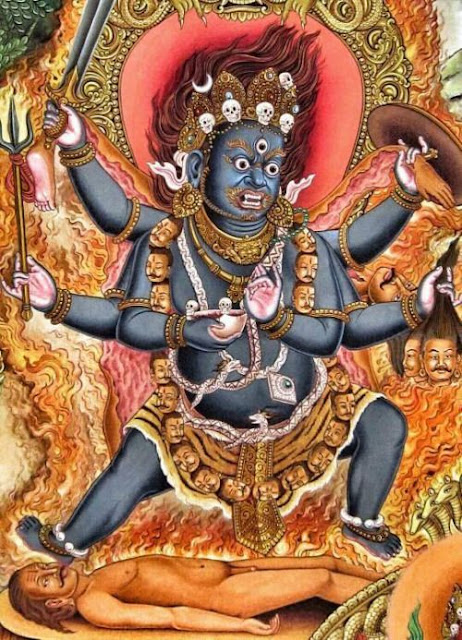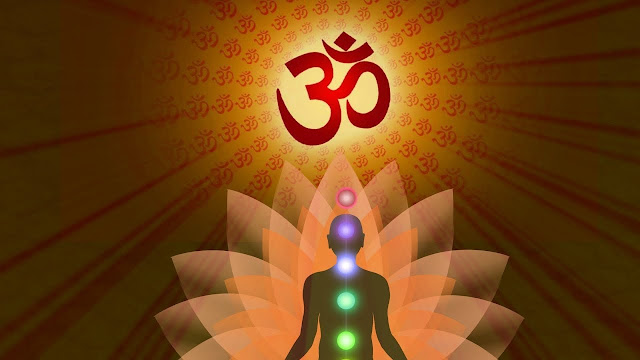
Vaishnodevi is said to be the mother Goddess, as the eternal universal ever existent energy. The temple of Vaishnodevi located in the mountains of Vaishnodevi near the town of Katra in the state of Jammu and Kashmir is situated at an altitude of about 5200 feet.
The Vaishno Devi temple is probable the most popular and visited place of pilgrimage in India and is visited by millions every year, who travel the to and fro distance of about 24 kilometers on foot, by horse or by dolis.Helicopter service is also available.
The Aarti of Vaishnodevi if recited with love, dedication and a pure heart is sure to bestow all possible reward to the devotee.
Vaishnodevi Aarti
English Translation
Jai Vaishno Mata, Maiya Jai Vaishno Mata l Haath Jod Tere Aage, Aarti Mai Gaata ll
Jai Vaishno Mata, Maiya Jai Vaishno Mata l
Shish Pe Chhatra Biraaje, Muratiya Pyaari l Gangaa Bahati Charanan, Jyoti Jage Nyaari ll
Jai Vaishno Mata, Maiya Jai Vaishno Mata l
Brahma Ved Padhe Nit Dvaare, Shankar Dhyaan Dhare l Sevak Chanvar Dulaavat, Naarad Nritya Kare ll
Jai Vaishno Mata, Maiya Jai Vaishno Mata l
Sundar Gufa Tumhaari, Man Ko Ati Bhaave l Baar-Baar Dekhan Ko, Aye Maa Man Chaave ll
Jai Vaishno Mata, Maiya Jai Vaishno Mata l
Bhavan Pe Jhande Jhoole, Ghanta Dhvani Baaje l Uncha Parvat Tera, Mata Priy Laage ll
Jai Vaishno Mata, Maiya Jai Vaishno Mata l
Paan Supaari Dhvaja Naariyal, Bhent Pushp Mevaa l Daas Khade Charano Me, Darshan Do Devaa ll
Jai Vaishno Mata, Maiya Jai Vaishno Mata l
Jo Jan Nishchay Karake, Dvaar Tere Aave l Usaki Ichchha Puran, Mata Ho Jaave ll
Jai Vaishno Mata, Maiya Jai Vaishno Mata l
Itani Stuti Nishadin, Jo Nar Bhi Gaave l Kahate Sevak Dhyaanu, Sukh Sampati Pave ll
Jai Vaishno Mata, Maiya Jai Vaishno Mata l
वैष्णो माता आरती
जै वैष्णो माता, मैया जै वैष्णो माता । हाथ जोड़ तेरे आगे, आरती मैं गाता ॥
जै वैष्णो माता, मैया जै वैष्णो माता ।
शीश पे छत्र बिराजे, मूरतिया प्यारी । गंगा बहती चरनन, ज्योति जगे न्यारी ॥
जै वैष्णो माता, मैया जै वैष्णो माता ।
ब्रह्मा वेद पढ़े नित द्वारे, शंकर ध्यान धरे । सेवक चंवर डुलावत, नारद नृत्य करे ॥
जै वैष्णो माता, मैया जै वैष्णो माता ।
सुंदर गुफा तुम्हारी, मन को अति भावे । बार-बार देखन को, ऐ मां मन चावे ॥
जै वैष्णो माता, मैया जै वैष्णो माता ।
भवन पे झण्डे झूले, घंटा ध्वनि बाजे । ऊंचा पर्वत तेरा, माता प्रिय लागे ॥
जै वैष्णो माता, मैया जै वैष्णो माता ।
पान सुपारी ध्वजा नारियल, भेंट पुष्प मेवा । दास खड़े चरणों में, दर्शन दो देवा ॥
जै वैष्णो माता, मैया जै वैष्णो माता ।
जो जन निश्चय करके, द्वार तेरे आवे । उसकी इच्छा पूरण, माता हो जावे ॥
जै वैष्णो माता, मैया जै वैष्णो माता ।
इतनी स्तुति निशदिन, जो नर भी गावे । कहते सेवक ध्यानू, सुख संपति पावे ॥
जै वैष्णो माता, मैया जै वैष्णो माता ।












